Happy New Year!
 Picture Credit - Dr. Seuss' Cat in the Hat Photo Gallery
Picture Credit - Dr. Seuss' Cat in the Hat Photo Gallery  Times Square - New Year's Eve 1938.
Times Square - New Year's Eve 1938.Picture credit and information about the history of New Year's Day.
 Picture Credit - Dr. Seuss' Cat in the Hat Photo Gallery
Picture Credit - Dr. Seuss' Cat in the Hat Photo Gallery  Times Square - New Year's Eve 1938.
Times Square - New Year's Eve 1938.

 Picture credit and information about Saddam's ghostwritten historical epic, Be Gone Demons! This is a superb article by the Telegraph.
Picture credit and information about Saddam's ghostwritten historical epic, Be Gone Demons! This is a superb article by the Telegraph. 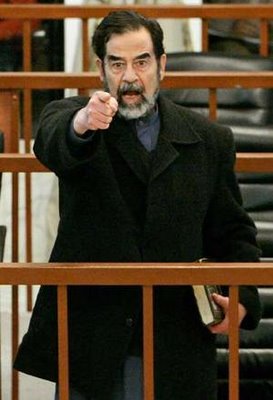 Picture credit and information about Saddam's last novel, Devil's Dance.
Picture credit and information about Saddam's last novel, Devil's Dance.Saddam Hussein, the former dictator of Iraq, was executed after a long public trial. According to FOX News, Saddam reportedly told his executioners, "Iraq is nothing without me." Here is a good CNN report about his crimes and his execution.
In my opinion, the televised testimony of women who had been abused, tortured, and humiliated in Saddam's prisons for no reason was the most moving aspect of the trial.
Hussein was executed for his complicity in the 1982 Dujail massacre. The "crimes against humanity" occurred after some people attempted to assassinate Saddam.
Saddam wrote a number of historical novels. His first novel was reportedly Zabeebah and the King (See also "Zabeiba" and "Zabibah"). According to the Telegraph, Saddam may have killed one of his ghostwriters:
[D]istinguished writers were asked to improve Saddam's yarns. Mujiba al-Anizi, whose husband, Sami, contributed to his first novel, Zabibah and the King, recalled how he was summoned from his job one morning and told he had three days to produce a book from the president's notes.
"Sami normally came home and kissed his children goodnight," recalled Mrs al-Azizi. "But that evening he just stood in the hallway sweating. He said 'our uncle' had given him a special task."
Two months later, just as 250,000 copies of Zabibah and the King were being anonymously distributed, Mr al-Anizi came home, walked into the kitchen, drank a jug of water and fell down dead. His widow believes he was killed on the president's orders to hush up his role in the book.
Zabeebah and the King was followed by The Impregnable Fortress, and Get Out, Damned One! (Be Gone Demons!).
A Canadian artist, Jonathon Earl Bowser, claims that the cover of Zabeebah and the King was plagiarized from a painting called The Awakening that he did in 1998. The cover of Zabeebah and the King and Bowser's painting The Awakening do look exactly the same. Here is Bowser's website.
The best article I have ever read about Saddam's psychology was published in the Telegraph and is titled "Saddam: The Great Dictator of Fairy Tales."
The article describes Saddam's historical epic Be Gone Demons! A Baghdad shopkeeper told the Telegraph reporter: "Everyone bought [Saddam's book] just to see what was on the president's mind. Most people concluded he was mad."
I think a lot of Iraqis are saying "Be gone demons!" about Saddam and his Baathist regime.
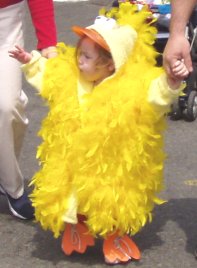
 Picture Credit
Picture Credit  Picture Credit
Picture Credit Since 1941, children all over the world have loved Robert McClosley's famous picture book Make Way for Ducklings.
Since 1978, each spring Boston has celebrated Duckling Day (first picture). Boston tots dress as ducklings and retrace the path taken by Mrs. Mallard and her ducklings from the Charles River to the Boston Public Gardens.
In the second picture, a mom has tied a bonnet on Mrs. Mallard and has taken a picture of her baby feeding this famous mother of eight!
The bronze statues of Mrs Mallard and her brood, seen in the third picture after a Boston snowstorm, were crafted by the artist Nancy Schön in 1987 and are a popular attraction in Boston Public Garden.
In 1991, the artist also made a replica of her Boston bronzes for Moscow's Novodevichy park, but uncultured hooligans sawed them off at the legs and stole them for scrapmetal! Luckily, the statues were restored in 2000. Russian children enjoy petting and sitting on the bronze ducklings.
One suspects that residents of St. Petersburg---home of Peter the Great's famous equestrian statue, The Bronze Horseman, which inspired Pushkin's poem of the same name---may be brooding darkly over the implications of Muscovy's fledgling ascendancy; still the Bronze Horseman seems to be taking the situation in stride.
 Picture Credit
Picture Credit  Picture credit and complete transcript of the 1964 Christmas Eve NORAD Tracks Santa. This site is a lot of fun!
Picture credit and complete transcript of the 1964 Christmas Eve NORAD Tracks Santa. This site is a lot of fun! Picture Credit: Giotto's "Slaughter of the Innocents" (c. 1305) Scrovegni Chapel, Padua
Picture Credit: Giotto's "Slaughter of the Innocents" (c. 1305) Scrovegni Chapel, Padua Picture credit and paintings of the Nativity by various artists.
Picture credit and paintings of the Nativity by various artists. While they were there, the time came for her to deliver her child. And she gave birth to her firstborn son and wrapped him in swaddling clothes, and laid him in a manger, because there was no place for them in the inn. In that region there were shepherds living in the fields, keeping watch over their flock by night. Then an angel of the Lord stood before them, and the glory of the Lord shone around them, and they were terrified. But the angel said to them, "Do not be afraid; for see--I am bringing you good news of great joy for all the people: to you is born this day in the city of David a Savior, who is the Messiah, the Lord. This will be a sign for you: you will find a child wrapped in bands of cloth and lying in a manger." And suddenly there was with the angel a multitude of the heavenly host, praising God and saying, "Glory to God in the highest heaven, and on earth peace among those whom he favors!"
When the angels had left them and gone into heaven, the shepherds said to one another, "Let us go now to Bethlehem and see this thing that has taken place, which the Lord has made known to us." So they went with haste and found Mary and Joseph, and the child lying in the manger. When they saw this, they made known what had been told them about this child; and all who heard it were amazed at what the shepherds told them. But Mary treasured all these words and pondered them in her heart. The shepherds returned, glorifying and praising God for all they had heard and seen, as it had been told them.
 Picture Credit and the story about Virginia O'Hanlon, a little girl who wrote a Letter to the Editor of the New York Sun in 1897 asking if there was really a Santa Claus.
Picture Credit and the story about Virginia O'Hanlon, a little girl who wrote a Letter to the Editor of the New York Sun in 1897 asking if there was really a Santa Claus.Virginia: I am 8 years old. Some of my little friends say there is no Santa Claus. Papa says, "If you see it in The Sun, it's so." Please tell me the truth, is there a Santa Claus? -- Virginia O'Hanlon
Francis Church: Virginia, your little friends are wrong. They have been affected by the skepticism of a skeptical age. They do not believe except they see. They think nothing can be which is not comprehensible by their little minds. All minds, Virginia, whether they be men's or children's are little. In this great universe of ours man is a mere insect, an ant, in his intellect, as compared with the boundless world about him, as measured by the intelligence capable of grasping the whole of truth and knowledge.
Here are some sites that tell about this correspondance:
Is There a Santa Claus? (Illustrated and set to music)
Christmas Poems and Stories (Many favorite stories and poems)
The National Christmas Center (Background about Virginia and Editor Francis Church)
 Picture credit
Picture credit Now, Dasher! now, Dancer! Now, Prancer and Vixen! On, Comet! On Cupid! On, Donner and Blitzen! To the top of the porch! to the top of the wall! Now dash away! dash away! dash away all!
This site has Clement Moore's famous poem, "The Night Before Christmas" and other wonderful links.
This site has Clement Moore's poem, illustrations, and the song "Santa Claus is Coming to Town."
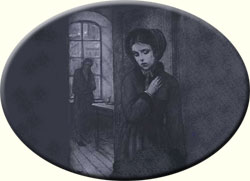

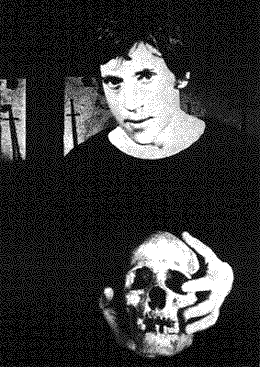 Picture credit and original translations of Vladimir Semeonovich Visotsky's songs at www.museprints.com
Picture credit and original translations of Vladimir Semeonovich Visotsky's songs at www.museprints.com  Picture credit to Gulag: Soviet Forced Labor Camps and the Struggle for Freedom
Picture credit to Gulag: Soviet Forced Labor Camps and the Struggle for FreedomHere is an English on-line version of Alexander Solzhenitsyn's novel One Day in the Life of Ivan Denisovich. The translation is by H.T. Willets.
Here is the Russian version.
Here is the English and Russian text side by side.
Here is the Wikipedia entry about Solzhenitsyn and about the novel.
One Day in the Life of Ivan Denisovich
The hammer banged reveille on the rail outside camp HQ at five o'clock as always. Time to get up. The ragged noise was muffled by ice two fingers thick on the windows and soon died away. Too cold for the warder to go on hammering.
The jangling stopped. Outside, it was still as dark as when Shukhov had gotten up in the night to use the latrine bucket — pitch-black, except for three yellow lights visible from the window, two in the perimeter, one inside the camp.
For some reason they were slow unlocking the hut, and he couldn't hear the usual sound of the orderlies mounting the latrine bucket on poles to carry it out.
Shukhov never overslept. He was always up at the call. That way he had an hour and a half all to himself before work parade — time for a man who knew his way around to earn a bit on the side. He could stitch covers for somebody's mittens from a piece of old lining. Take some rich foreman his felt boots while he was still in his bunk (save him hopping around barefoot, fishing them out of the heap after drying). Rush round the storerooms looking for odd jobs — sweeping up or running errands. Go to the mess to stack bowls and carry them to the washers-up. You'd get something to eat, but there were too many volunteers, swarms of them. And the worst of it was that if there was anything left in a bowl, you couldn't help licking it. Shukhov never for a moment forgot what his first foreman, Kuzyomin, had told him. An old camp wolf, twelve years inside by 1943. One day around the campfire in a forest clearing he told the reinforcements fresh from the front, "It's the law of the taiga here, men. But a man can live here, just like anywhere else. Know who croaks first? The guy who licks out bowls, puts his faith in the sick bay, or squeals to godfather." [Full text]
 On December 26, 2006, it will be ten years since JonBenet Ramsey was murdered in the basement of her Boulder, Colorado home. If she were alive today, she would be sixteen years old.
On December 26, 2006, it will be ten years since JonBenet Ramsey was murdered in the basement of her Boulder, Colorado home. If she were alive today, she would be sixteen years old. I read a sweet story about JonBenet that I want to share. Her teacher told this story.
One day, a kindergarten classmate of Jonbenet's brought in some cupcakes to share for her birthday.
Unfortunately, after she gave out all the treats, there was no cupcake left for the birthday girl. JonBenet said that she would cut her cupcake in half and that the girls would share.
Most kindergarten children would not volunteer to share a cupcake.
JonBenet's killer, of course, was only capable of inflicting pain on an innocent child. All this coward could share was his hatred. He enjoyed writing the long, cruel, anonymous ransom note that inflicted even more pain on the family and friends of this child.
This animal gets gratification from tormenting people. He loves to hurt people, so that's what he does.
 Credit
Credit "The Nose" is a famous short story by the Russian writer Nikolai Gogol (1809-1852). Wikipedia has an article about the story here. The story is about a "St. Petersburg official whose nose leaves his face and starts living a life of its own."
The Russian site Internet Library has a collection of classic stories in Russian.
Project Gutenberg has Gogol stories here.
Professor Gary Saul Morson has an article about "The Nose" here.
Bibliomania has a full text of the story in English, but is sometimes off line, so here is another link to the story.
On March 25th there took place, in Petersburg, an extraordinarily strange occurrence. The barber Ivan Yakovlevich, who lives on Voznesensky Avenue (his family name has been lost and even on his signboard, where a gentleman is depicted with a lathered cheek and the inscription “Also bloodletting,” there is nothing else)—the barber Ivan Yakovlevich woke up rather early and smelled fresh bread. Raising himself slightly in bed he saw his spouse, a rather respectable lady who was very fond of drinking coffee, take some newly baked loaves out of the oven. [Full Bibliomania text]
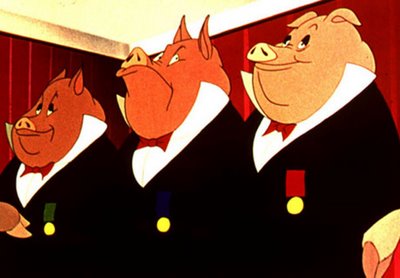 Credit
CreditStirlitz went into Müller's empty office. He walked up to the safe and pulled on the handle. It wouldn't open. After making sure that he was alone, he took out his gun and blasted away. Still, the safe wouldn't open. Next, he put a hand grenade under the safe and removed the pin. After the smoke cleared, Stirlitz once again tried to open the safe. Again, however, he was unsuccessful. "Hmmm..." the experienced intelligence officer at last concluded, "must be locked."
The columnist Charles Krauthammer believes that Putin himself was responsible for the murder of the KGB-turncoat Alexander Litvinenko.
On December 5, the Times said that "Intelligence services in Britain are convinced that the [polonium] poisoning of Alexander Litvinenko was authorised by the Russian Federal Security Service."
The Times (12-9-06) now reports that the Russian authorities are backtracking on their promise to cooperate with the British in the investigation of the polonium poisoning:
Having promised last week to co-operate fully with the British investigation, the Russian Prosecutor-General has thrown four separate obstacles in its way. He has told the visiting detectives that they may request interviews but only observe them, and then only if the interviews are granted. He has ruled out extraditing any Russian citizen for trial in Britain. He has announced his own investigation into the alleged attempted murder of two of Mr Litvinenko’s associates — who, as Russian citizens, provide a pretext for giving the Russian inquiry priority over the British one. And he has twice postponed interviews with the man Scotland Yard most wants to question.
That man is Andrei Lugovoy, the former KGB colonel, who not only met Mr Litvinenko on the day he appears to have been poisoned but also allegedly occupied a hotel room where traces of polonium-210 have been found. Mr Lugovoy has told The Times that he has nothing to hide. Even so, he has been unavailable since the Scotland Yard team’s arrival: they have been denied access to him at a clinic where a third figure in the affair is said to be suffering from acute radiation sickness.
It would be wrong to take entirely at face value Mr Litvinenko’s self-assessment as a persecuted crusader for justice. His loyalties and business dealings were complex and possibly compromised. That he was a strange man does not make his murder any less sinister. The Kremlin had at least three compelling reasons to wish to silence him. First, he claimed before his death to have evidence linking the murder of Anna Politkovskaya, the journalist and outspoken critic of Russian policy in the Caucasus, to state security forces. Secondly, he had written a book accusing the FSB of planning to blow up an apartment building to bolster President Putin’s case for invading Chechnya in 1999. A new and heavily annotated edition of the book is due to be published next month. Thirdly, as we report today, he claimed to have uncovered a Kremlin-backed plan to blackmail or eliminate foreign-based Russian citizens holding assets salvaged from Yukos, the oil company founded by the jailed tycoon Mikhail Khodorkovsky.
....Mr Putin should remember that power corrupts, and centralised power corrupts the figure at the centre. [Full text]
Alas, Putin is just one more thuggish, uncreative, flat-footed, KGB gumshoe---not a Stirlitz:
"Stirlitz and Kathe are walking through the park. A gunshot rings out. Kathe falls. Blood flows. Stirlitz, relying on his keen instincts, immediately gets suspicious."
***
A flower pot fell off the window sill of the secret apartment and smashed Stirlitz on the head. This was the signal that his wife had just given birth to a son. Stirlitz shed a single manly tear. He hadn't been home for seven years.
***
On May Day, Stirlitz put on his Red Army cap, grabbed a red banner and marched up and down the corridors of the Reich Security Office singing the Internationale and other revolutionary songs. Never before had Stirlitz been so close to failure.
***
In the Reich Security Office, Müller, Himmler, and Bormann are all standing in the cafeteria line, patiently waiting their turn. Stirlitz enters and passes everyone as he strides directly to the head of the queue. He is served immediately. Müller, Himmler and Bormann are baffled. What they didn't know is that a Hero of the Soviet Union has the right to receive service without having to stand in line. [All Stirlitz jokes]
More Stirlitz jokes here.
Stirlitz opened a door. The lights went on. Stirlitz closed the door. The lights went out. Stirlitz opened the door again. The light went back on. Stirlitz closed the door. The light went out again. "It's a fridge," concluded Stirlitz.
Here is a Wikipedia entry on Russian Political jokes.
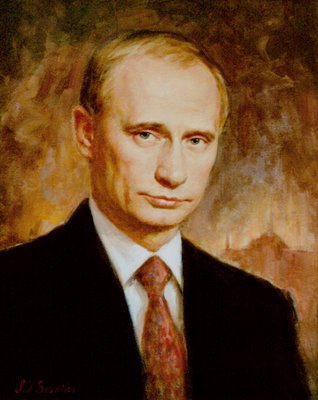 Credit
Credit Some writers have dismissed Livitenko as crazy; some allege that he was a nuclear smuggler for al-Qaeda-affiliated Chechens. Maybe. Or maybe these writers are just disseminating old-fashioned KGB/FSB smears.
The Russian propaganda apparatus has tried to depict its war in Chechnya as part of the War on Terrorism. In fact, the Chechens were nationalist, not Muslim extremist, opponents of Russian rule. The late President of Chechnya, Maskhadov, was a former Soviet military officer who even supported the U.S. war to topple Saddam. Bin Laden did not.
Wikipedia has some background about Litvinenko's charges against Putin and about the fate of other Putin critics. The Museum Store has this reproduction of the Townley Urn (ca. 2nd century AD). According to the Museum Store, the Townley Urn "was excavated by Sir Gavin Hamilton and restored in the 18th century. It was made famous by the inspired poem, Ode on a Grecian Urn, by John Keats (1795-1821). The figures on the vase are followers of the wine god, Bacchus, and are shown dancing in revelry."
The Museum Store has this reproduction of the Townley Urn (ca. 2nd century AD). According to the Museum Store, the Townley Urn "was excavated by Sir Gavin Hamilton and restored in the 18th century. It was made famous by the inspired poem, Ode on a Grecian Urn, by John Keats (1795-1821). The figures on the vase are followers of the wine god, Bacchus, and are shown dancing in revelry."THOU still unravish’d bride of quietness,
Thou foster-child of silence and slow time,
Sylvan historian, who canst thus express
A flowery tale more sweetly than our rhyme:
What leaf-fring’d legend haunts about thy shape
Of deities or mortals, or of both,
In Tempe or the dales of Arcady?
What men or gods are these? What maidens loth?
What mad pursuit? What struggle to escape?
What pipes and timbrels? What wild ecstasy? [Full text]
 Credit
Credit Official White House Christmas Picture, 2006
Official White House Christmas Picture, 2006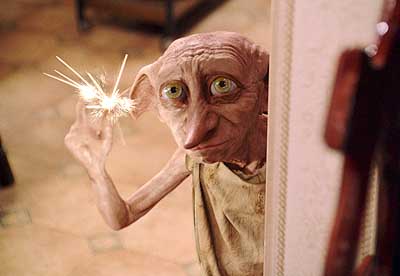 Credit
Credit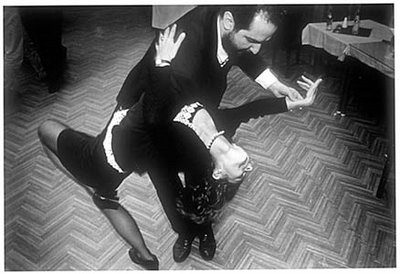 Credit
Credit